In a new three-part travel series on Israel/Palestine, Jenine Abboushi lays bare the surveillance state.
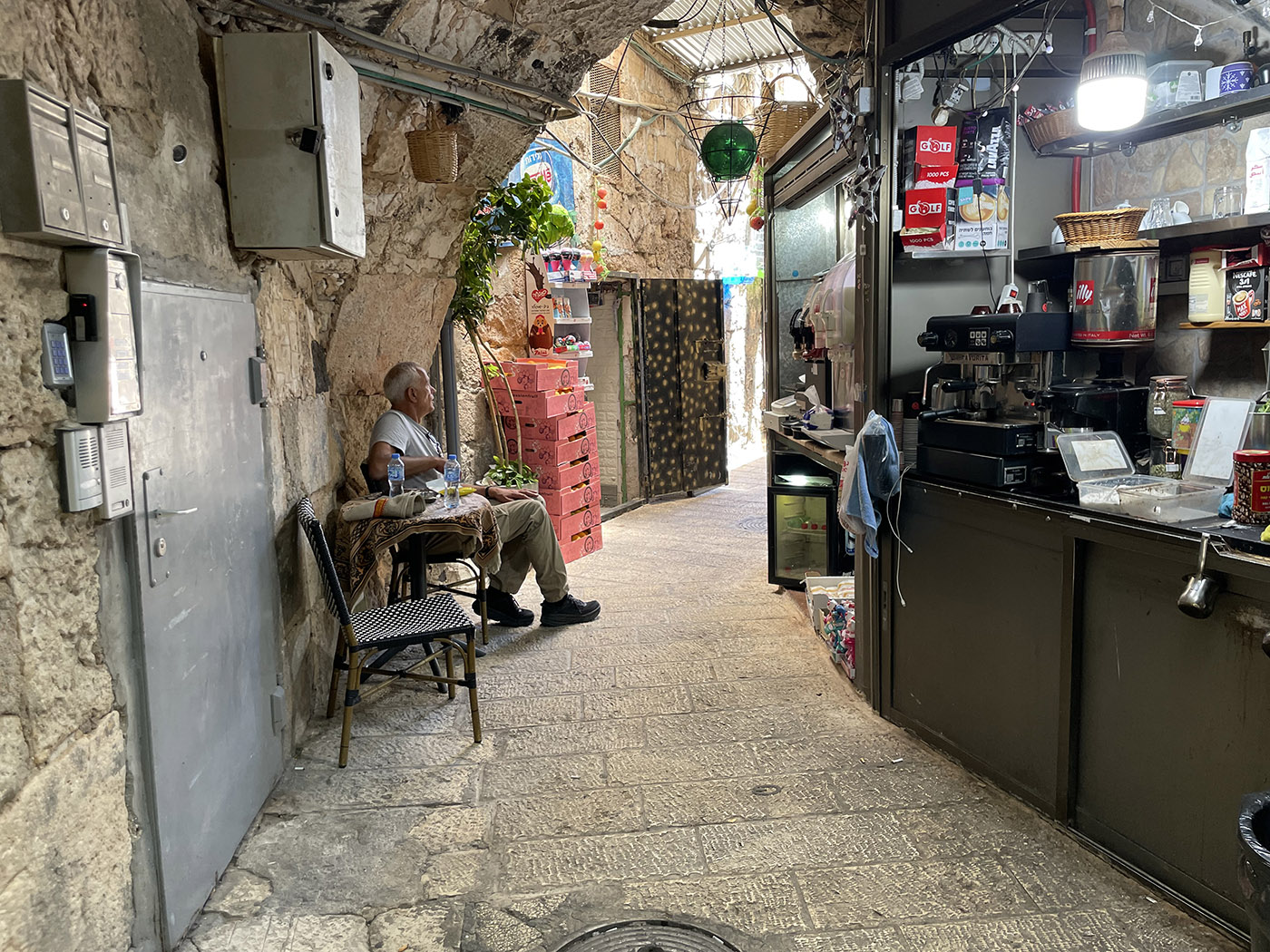
Cameras From Tel Aviv to Jerusalem
Dear Civil Sirs, I regret to inform you that I may have fallen in love with the wrong person…

A hundred years must have slipped by since I last returned to Palestine with my children. Israel’s feverish colonization has created unreal cities, settlements, and “territories.” And for all inhabitants in this small land, one or more of these realms is unattainable in every sense. Whoever tries to pass through Israel’s complex barricades experiences how physically separated and yet entwined Palestinian and Israeli lives have become. Israeli encroachment on Palestinian land, water, towns and villages, especially from Hebron to Nablus, navigating through Jerusalem and Bethlehem, is so intense that the Israelis are now living on top of the Palestinians, often quite literally. And the measures Israel takes to marginalize and conceal Palestinian worlds from international, and especially Israeli citizens’, view, have created ever more untenable alignments of space and peoples. For all its inhabitants, Israeli and Palestinian, it is a land of proliferating divisions (by restrictions, regulations, blockades) that require micro-managing to a repressive degree, like “cancerous” bodies without organs — the result of an ambitious human experiment gone south, like the one that philosophers Deleuze and Guattari envision in A Thousand Plateaus: Capitalism and Schizophrenia.
With ever harsher restrictions, Israeli policy divides Palestinians into many categories, and each category into curious subclassifications. One category — on the margins of the news at the moment — is Israeli border control of “foreigners,” or what Israel calls Palestinians like me, who have no hawiya, the identity card required to reside in the West Bank, and formerly also Gaza before the Israeli withdrawal and blockade (Israel had cut off all national and residential rights to Palestinians who were abroad in 1967). The “foreign” Palestinians likely to face even more restrictions are those who confess to amorous relationships with West Bank Palestinians (or who are proven to be in relationships), or who have immediate family living there, or who own property or stand to inherit property, or who were previously barred from entry into the country, and so on. In other words, we now have different statuses within the category of “foreign” Palestinians.
Before flying to Tel Aviv in late June of this year, I had to wade through the new border regulations for such “foreigners.” Mystified by the restrictions I read in a 97-page document titled “Activities in the Territories File of Standing Orders,” I solicited interpretations from journalist friends and even travel agents. I was trying to find out if I could fly into Tel Aviv, or whether I would be forced to cross the Allenby Bridge from Jordan to Jericho, at 381 meters below sea level, and at what cost. Ibrahim, a classmate from my Ramallah Friends School days who now practices law in Boston, studied the document and confirmed that the new regulations are deliberately convoluted. Eventually itakalna 3la Allah, as we say, hoping for the best, our plan was to all meet in Ramallah, implausibly and cheekily, for a class reunion.
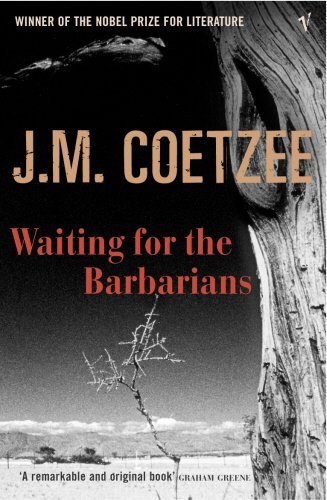
But until the day we were to travel to Tel Aviv airport or by land to Jericho over the Jordan River, we continued to try to decipher the more alarming travel requirements, such as the possibility of being ordered to surrender large sums of money (7,000 and 20,000 euros) to the Israelis at the border. “The Head of the Population Registry Unit at the Civil Administration is authorized to require a guaranty of up to 25,000 shekels,” and “The Head of the Documentation and Registration Department at COGAT is authorized to require a guaranty of up to 70,000 shekels,” and finally, raising the amount to indefinite heights, the “Head of the Operations Department at COGAT is authorized to require a guaranty of more than 70,000 shekels” (COGAT, or the Coordination of Government Activities in the Territories, is the “civil” Israeli administration in the Palestinian territories). After we leave the country (“we” being whoever had such money to spare), the said sum would be returned to us by mail if the Israeli authorities judged us to have followed all regulations during our stay; otherwise, they would “confiscate” the amount, offering us 45 days to appeal and prove their assessment erroneous.
Ironically, Israel enacted these new regulations in pursuit of its goal that Israeli citizens be allowed to enter the United States with no visa requirement. The US government (probably with pressure from Palestinian American advocacy movements) asks that that Israel cease to harass Palestinian Americans trying to enter the West Bank to visit family, study, teach at the universities, and pursue professional activity. The Israelis promised the Americans to clarify their policy in (the ancient kingdoms of) “Judea and Samaria,” their archaic term for the West Bank. The biblical name of course is part of a settler-colonial project to fabricate indigeneity, and to efface over 2,000 years of subsequent civilizations. It is also akin to fundamentalist imaginings of others, like those who attempt to dress and behave like a prophet and live in his times. More frequently, Israel’s new border regulations refer to what land remains of the West Bank, where over three million Palestinians live today, as “The Area” (using the language of dystopian sci-fi). Palestinians are either “residents” or not of “The Area.” Most of the document’s references to people and places resemble those of novelist J.M. Coetzee in his imagined exemplar of all empires — the abstract, unnamed, and unlocatable “empire of pain” of Waiting for the Barbarians.
Almost perversely, then, instead of “clarifying” their regulations for the US government, the Israelis added many restrictions and requirements that did not previously exist, making border crossing for Palestinian Americans, for example, even more difficult than it was before, and in many cases impossible. The newest version of the Israeli regulations has been reduced from 97 to 90 pages, thanks to minor revisions. The European Union (which has some sway over the Israelis because they benefit from exceptional amounts of Erasmus funding), in addition to the Biden administration, made the Israelis remove the quotas for “foreign” students and teachers allowed in. But both the Europeans and Americans seemed to have no problem, for example, with the guaranties the Israelis can require at the border, or the harassing and unintentionally hilarious applications for entry, through which the Israelis vet student and faculty credentials like wannabe Ivy League universities. The Israelis also apparently had to take out the designated 30-day deadline — as it appears in the first version of the document — that is given to “foreigners” to inform COGAT should they start a relationship with a West Bank Palestinian. If this is the case, these minor revisions will unfortunately abort artistic projects-in-the-making — video or letter confessionals to the authorities, as in, “Dear Civil Sirs, I regret to inform you that I may have fallen in love with the wrong person…”
I filled out an online form and received permission to land in Tel Aviv airport — but with no guarantee, stipulates the authorization, of entry into the country.
Before I flew into Tel Aviv, I already knew from my trip with the children in 2015 that I had better reserve a hotel room in Jerusalem for the first few nights before going to Ramallah, so that I would not run the risk of getting barred from the West Bank, or from Jerusalem and the rest of the country (entry rules differ). It is expensive for Palestinians to travel, as they cannot take convenient flights (like the direct El Al one I, with my foreign passport, could have taken, but did not — not wanting the guaranteed strip-search and foul interrogation in a French airport before even boarding). To travel, West Bank Palestinians have to fly out of Amman, taking a laborious and costly two-part trip.
I filled out an online form and received permission to land in Tel Aviv airport — but with no guarantee, stipulates the authorization, of entry into the country. Walking to and fro in the airplane aisle, I was unsurprised to observe that I was perhaps the only Palestinian on board. Upon arrival I found that the airport was unrecognizable, fully renovated since I had last entered, with no special lines for the natives, and no apparent infrastructure to interrogate and strip-search us (because Palestinians with hawiyas have for years been prohibited from flying into Tel Aviv, and can only enter the West Bank over the bridge from Jordan). It turned out that the new regulations were suspended until September 5, and now, as I write, until October. I may soon be barred from flying into Tel Aviv, despite my foreign passport, and consequently have to travel over the bridge, especially if I stand to inherit property, or if I couple up with a hawiya type.
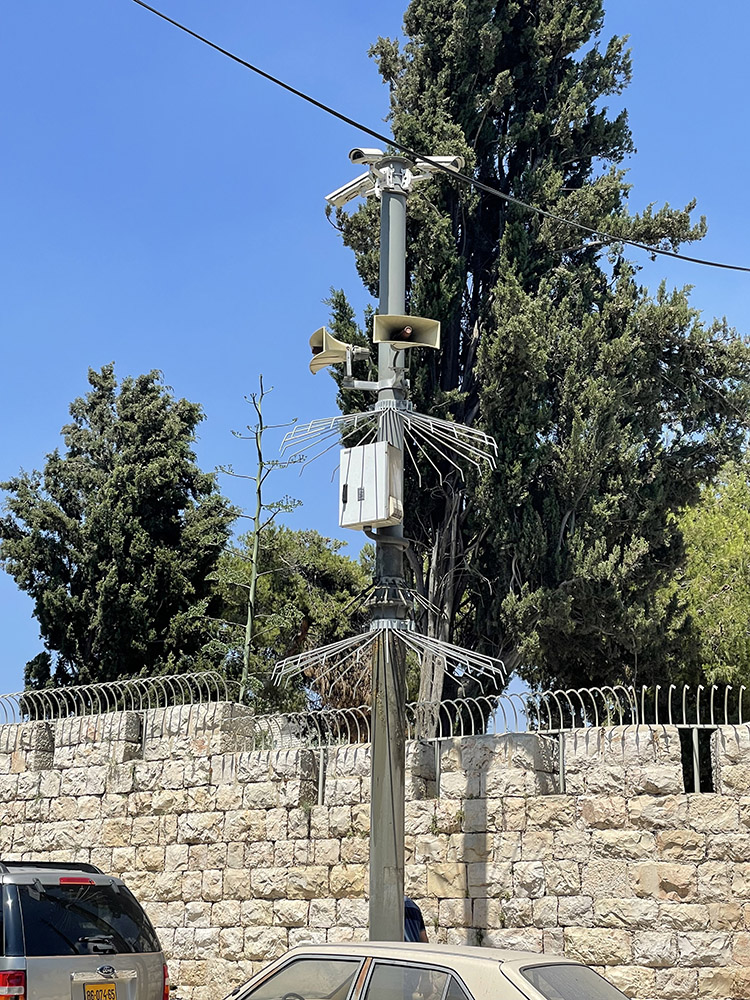
But my border-crossing this time was different. Once in Tel Aviv airport, we inched down an attractively designed slope to passport control, in an unattractively lengthy line, for what I estimated was a three-hour wait. A moving walkway right next to this line allows those who just showed up to cut ahead of everyone. This illogical organization, and the oppressive wait, was somewhat reassuring to me, as I hoped to slip through the gaps. And sure enough, soon a border policewoman arrived to pass out a stack of small, magic blue papers, asking each person the purpose of their visit before passing them a blue slip. She looked me in the eye and handed me one without a word and without even glancing at my passport. I could just leave. I wondered if I had already been identified, by means of the biometric controls used before and after passport control, which take headshots repeatedly with a camera that seems to pierce the eyes, or by the pre-travel online application. Probably I was fully identified, and the police did not bother investigating at that border, perhaps because I have long passed the age of invincibility.
I rode the train to the central bus station in West Jerusalem. The tram that takes travelers from the bus station to a stop near Damascus Gate was not working. I asked a young woman about the bus, but she had never heard of the Old City, or Damascus Gate. Later I thought perhaps she could have directed me to the Wailing Wall. Her ignorance of anything outside of her world and just down the road made my surroundings feel even more unreal and disorienting.
During that first evening in Jerusalem, I walked all over the old city with a friend, who remarked that Palestinian resistance is finished in the Old City because of the surveillance cameras, with the exception of the Bab Hutta neighborhood adjacent to Al-Aqsa Mosque. As we walked through the Old City, he pointed out the unimaginable number of surveillance cameras. It is as if the city now serves as a display window for Israel’s global business in security systems (which for decades has also included training many countries’ police, military, and various secret services in torture, surveillance, racial profiling techniques, and forcibly dispersing demonstrations). If any Palestinians attempt acts of resistance and flee, disguising themselves, the chains of computerized surveillance cameras throughout the city reconstruct images of their body parts captured on camera during the getaway. A young man tried to stab an Israeli that day in the Old City, barely wounding him. “How long will he be imprisoned?” “About 18 years.”
We chat as we wind along. The Israelis have their eyes on big properties in the Old City, and offer Palestinian owners vast sums of money for them, my friend explains. Several such Palestinians have sold their homes to Israelis. But if someone tracks down just one person who sells property to the Israelis and then makes off to the US to hide out with their riches, there would likely be no more sales to the Israelis. For now, these new resident Israelis move into the heart of the Old City to live in their militarized outposts, behind thick metal doors, surrounded by unwanted neighbors. The Israeli residents hire private security guards, excessively armed, to walk them to their bunkers, and even escort their children. I saw an ultra-Orthodox man under heavy guard pass into Hosh el-Shawish alleyway carrying bags of toilet paper, vegetables, and bananas, and passing in front of us as we drank coffee right up against his metal door. The Palestinian who runs the little café, stuck in an elbow of this narrow path, described to me the inside of their massive space. He knows it well, as every week the families who live behind the metal door ask him to come in and turn off, and then on, the lights before and after their Sabbath. They live in intimate exchange, to say the least. And with the tens of thousands of surveillance cameras strung throughout a Jerusalem teeming with soldiers, informants, and troops of private security guards, all is well! And the Palestinians grow more dispossessed by the month.
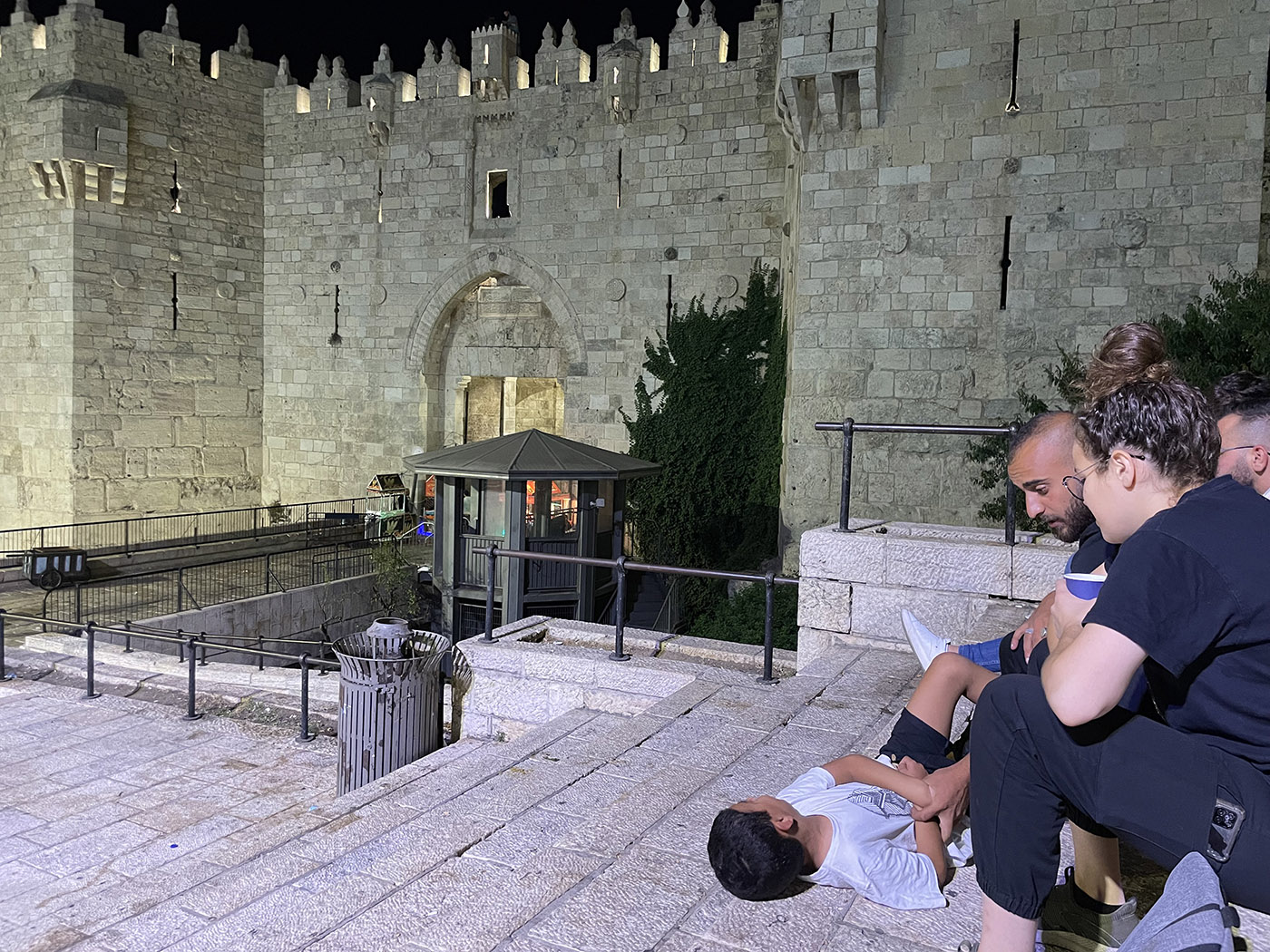
In the late evening, we got some mint tea in paper cups from a cart in Musrara, just across from Damascus Gate, run by a vendor nicknamed El-Dawi (and he lights our way!). We sat on the stairs of Damascus Gate. As the evening and the city spread out before us, we felt this fortress of Suleiman the Magnificent become a Palestinian living room. We partook in the gathering, conversation, and sahra, in our soft evening together. The Israeli soldiers in heavy gear, hovering in their ugly implantations at the top of the stairs and at the entrance to Damascus Gate, did not drag off any young people to beat and arrest that evening. No one paid them any heed.
The Palestinians of the Old City are increasingly impoverished, living in cramped quarters, so the cool night and beauty of the city felt refreshing. A father played with his little boy on the steps, hugging and wrestling him right next to us, as he conversed with his wife. We felt we were invited into their home. Two young teens this family knows called out in glee from atop Damascus Gate, the center battlement, arms raised gallantly, and they are the kings of Jerusalem! Jerusalem belongs to them.
Read the continuation of this column in Part 2: From Jerusalem to Ramallah and Ein Qinya, coming October 31, 2022.



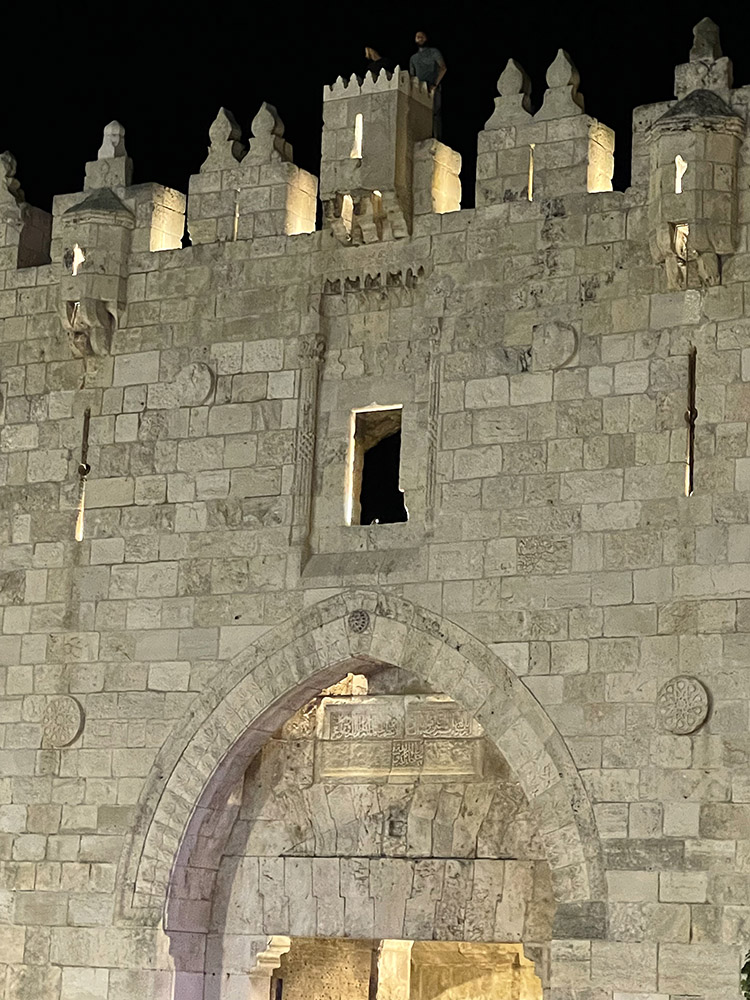

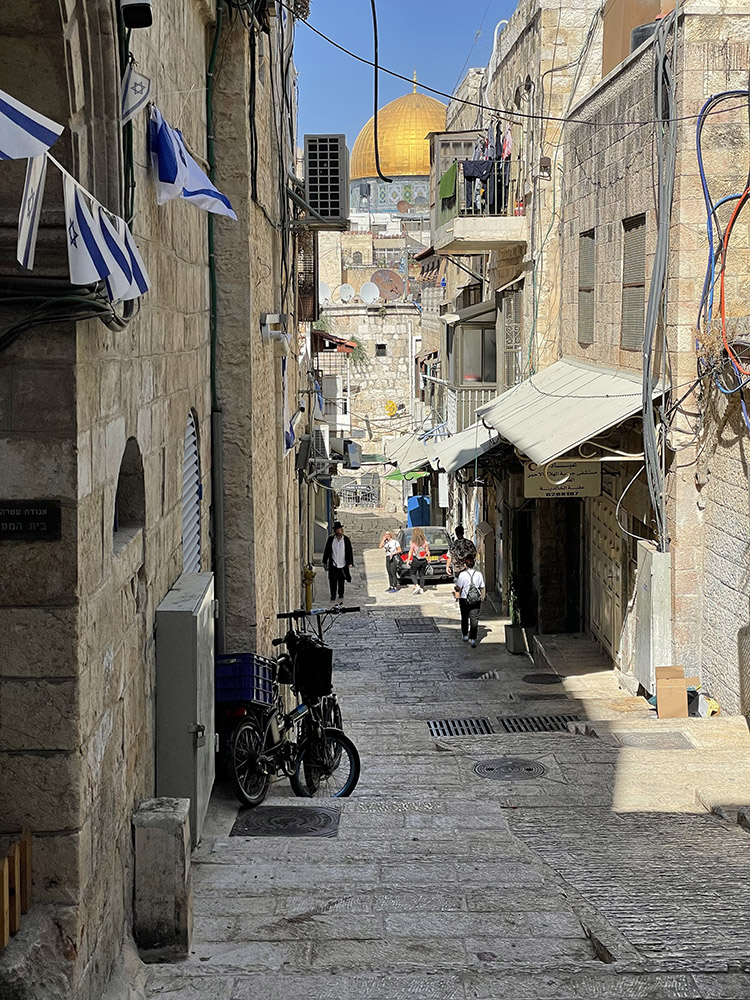
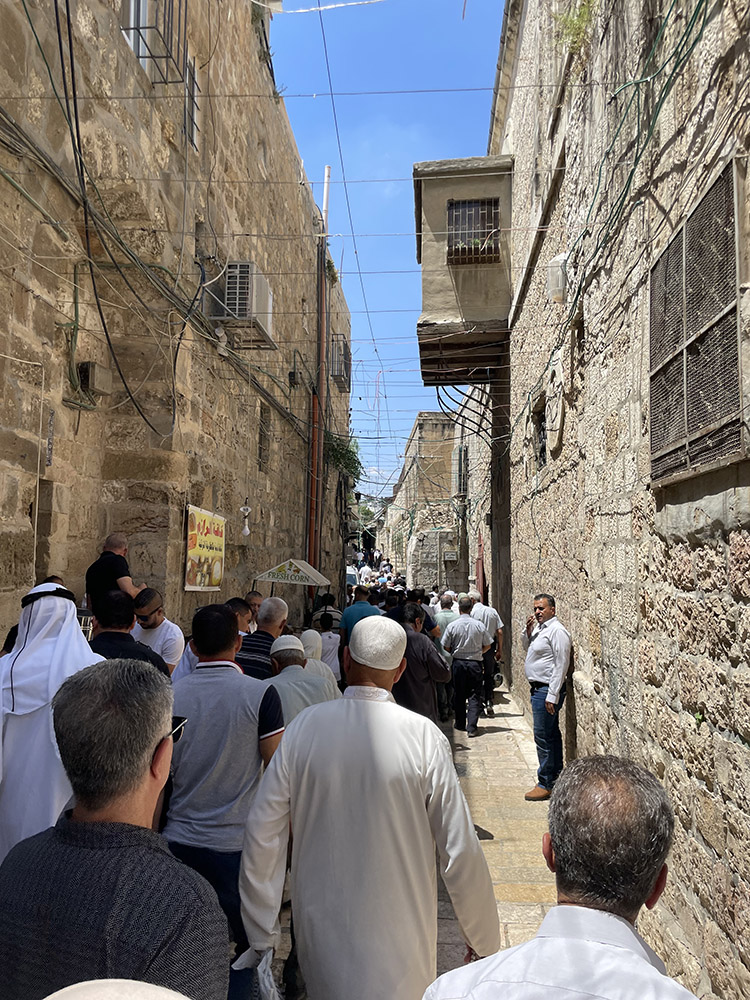




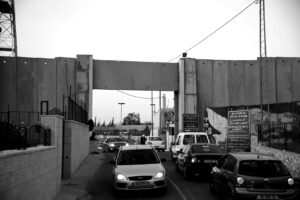

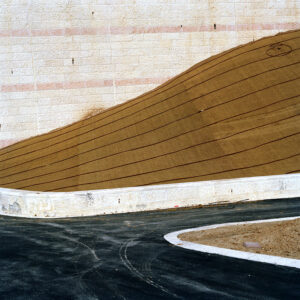
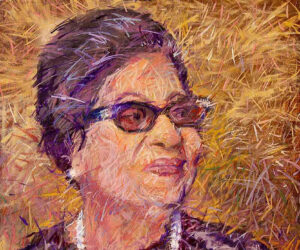
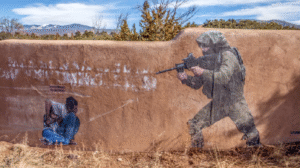
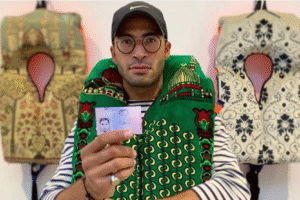
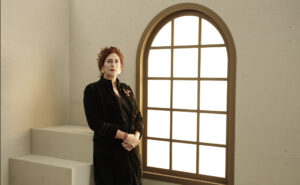
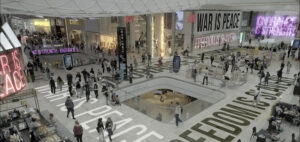
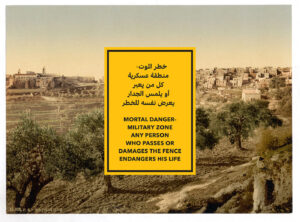
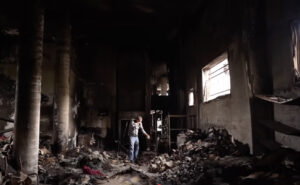

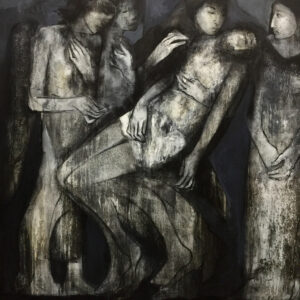


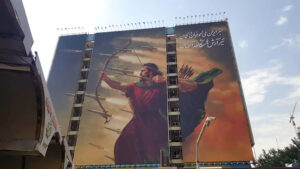
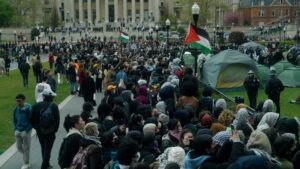
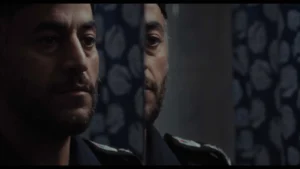





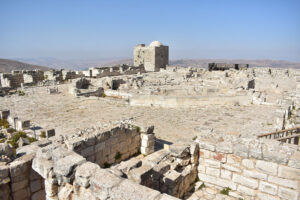
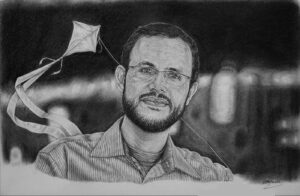
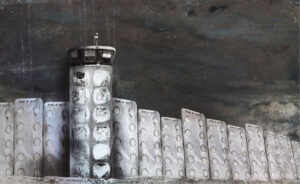

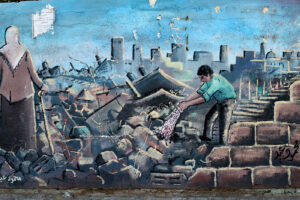

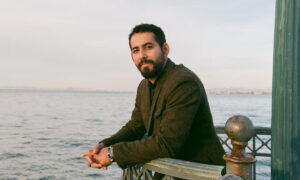

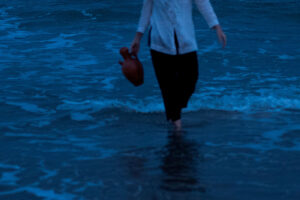

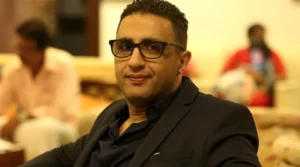

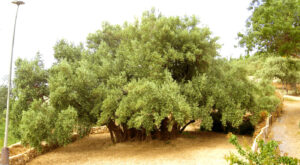

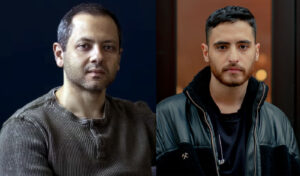
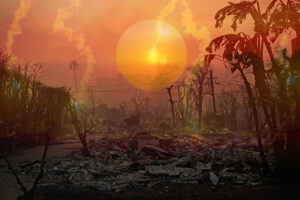









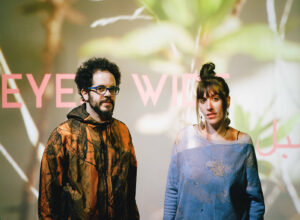

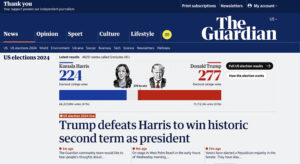
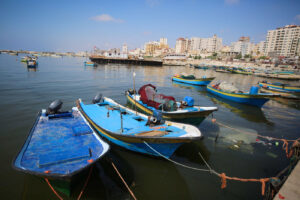



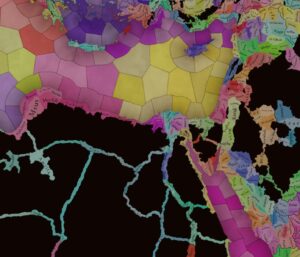
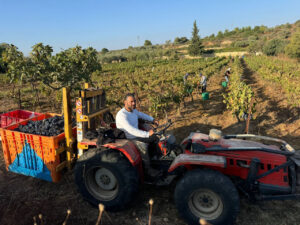

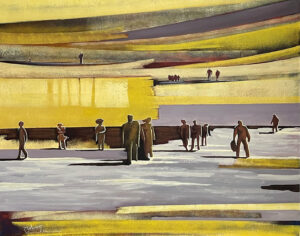



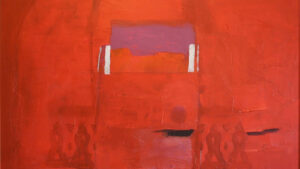
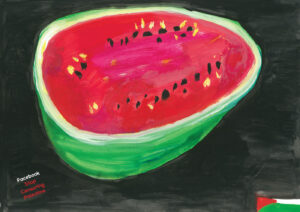

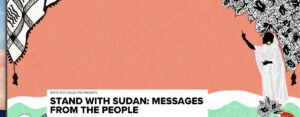

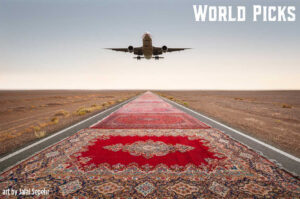

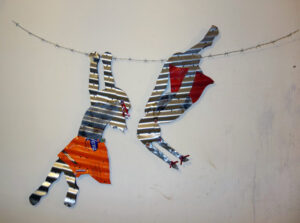





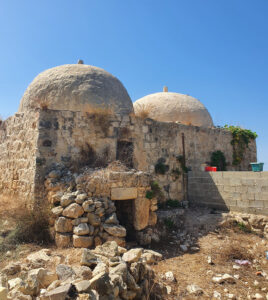
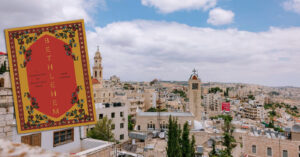
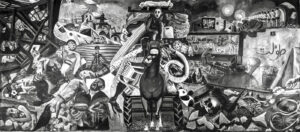


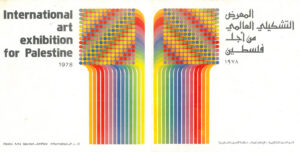
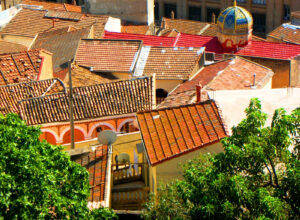
![Fady Joudah’s <em>[…]</em> Dares Us to Listen to Palestinian Words—and Silences](https://themarkaz.org/wp-content/uploads/2024/03/SAMAH-SHIHADI-DAIR-AL-QASSI-charcoal-on-paper-100x60-cm-2023-courtesy-Tabari-Artspace-300x180.jpg)

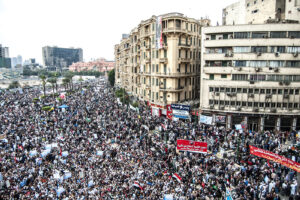
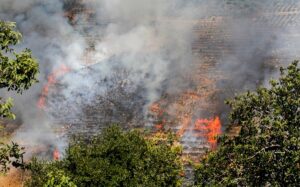

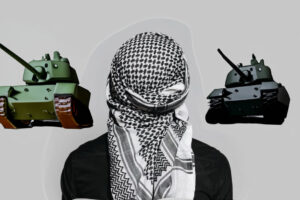


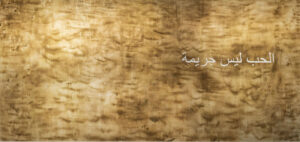

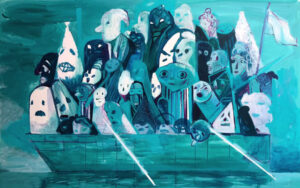
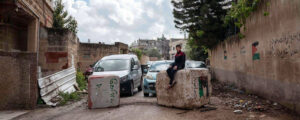

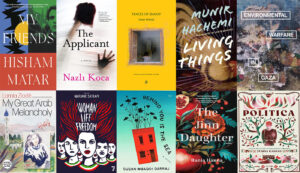
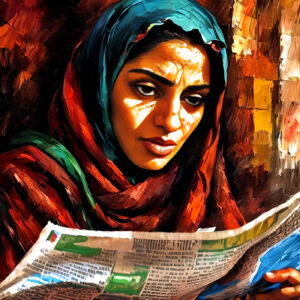










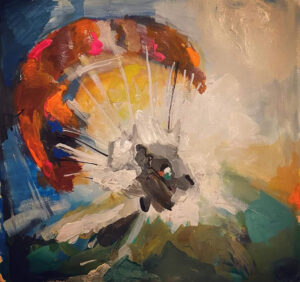
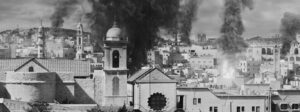



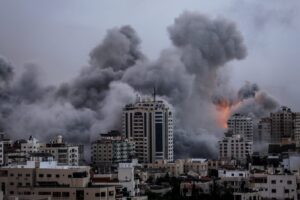
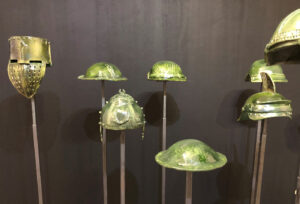
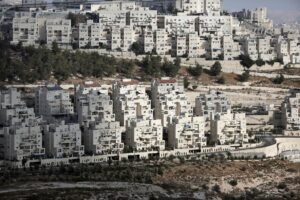

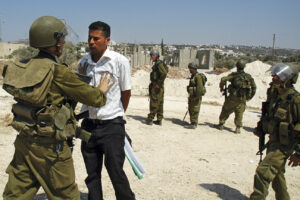
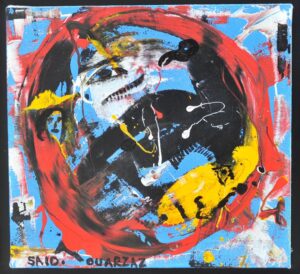
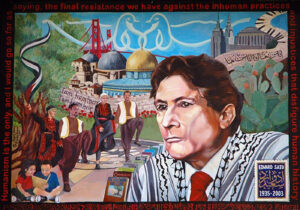

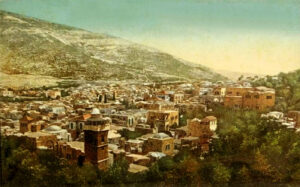



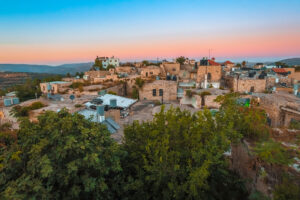







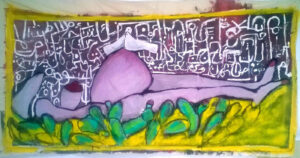

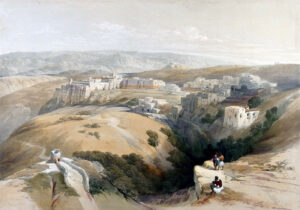
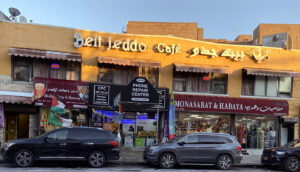







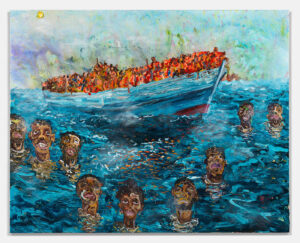
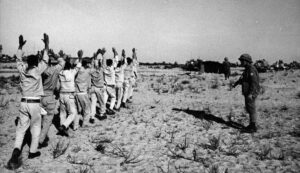
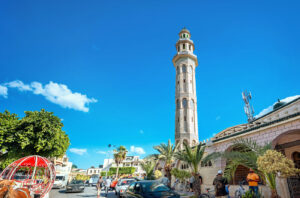

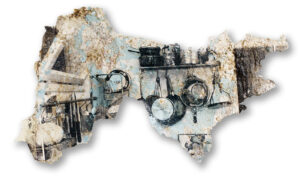
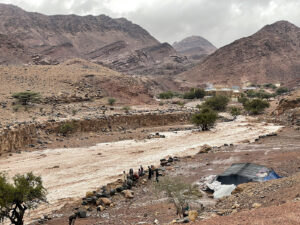

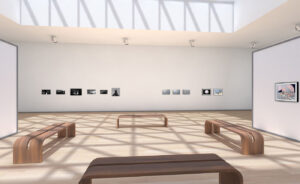
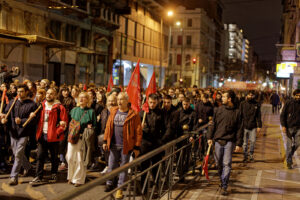

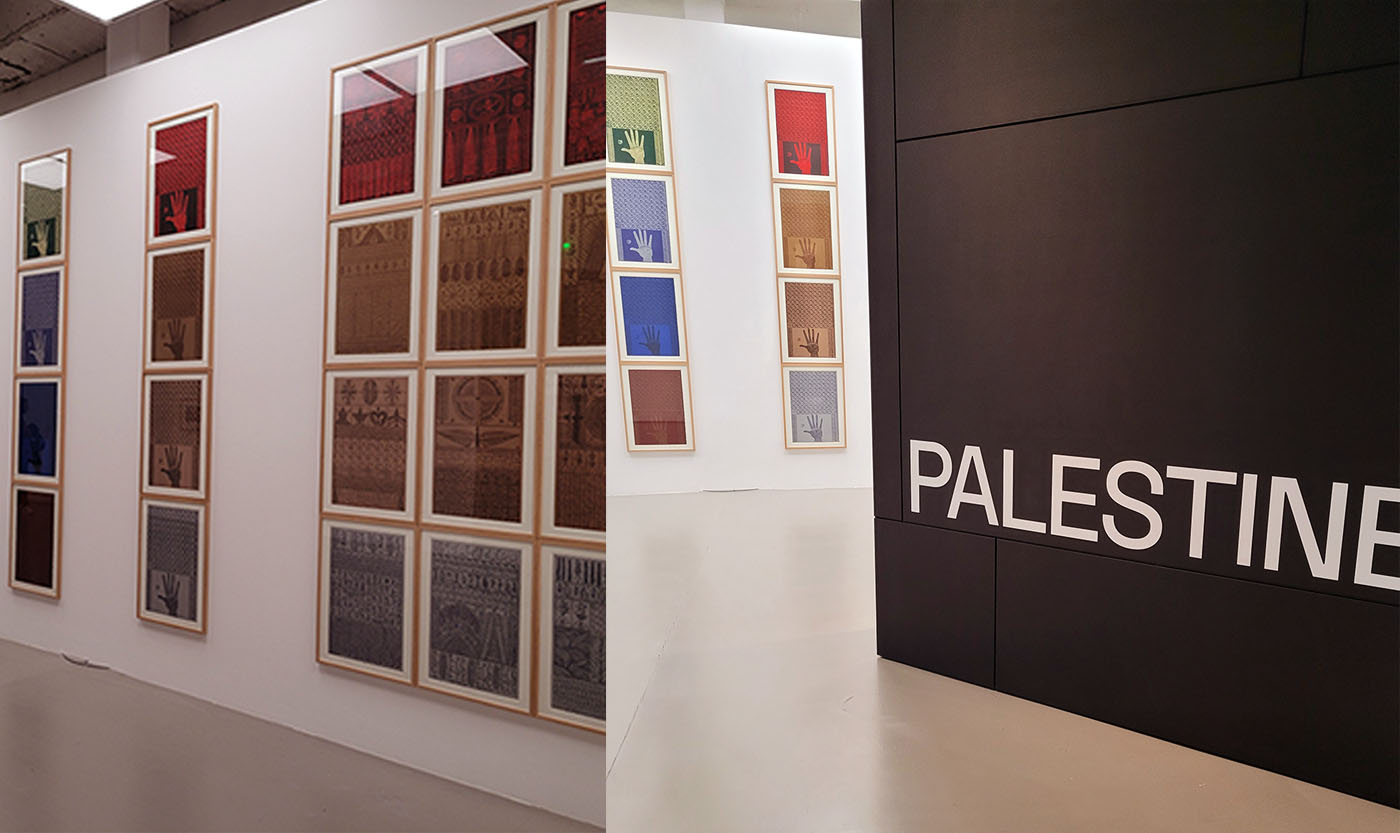
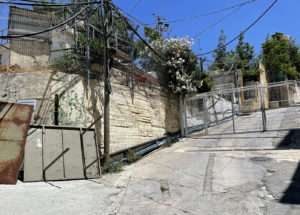
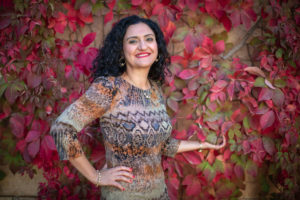
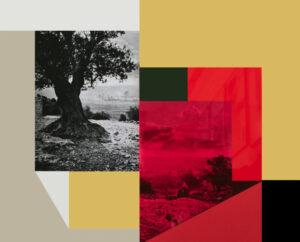
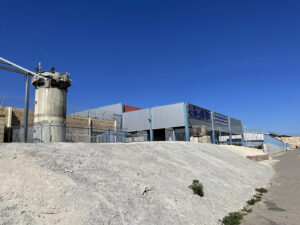
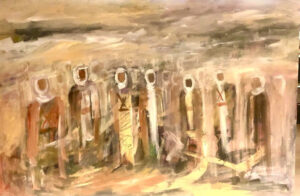
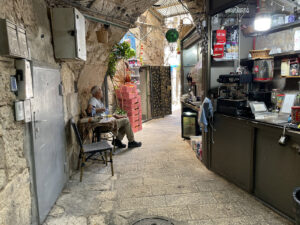

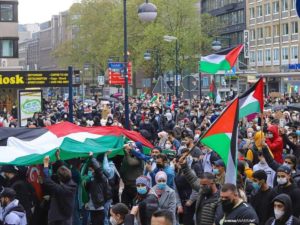
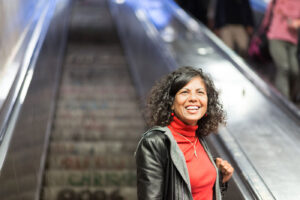

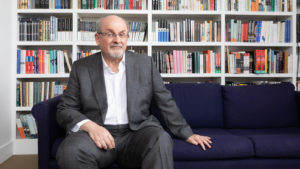


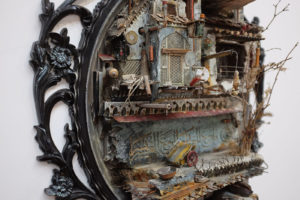
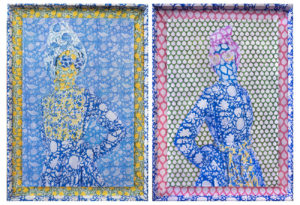
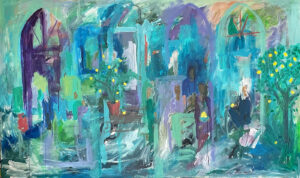

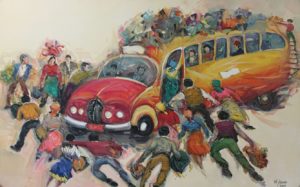
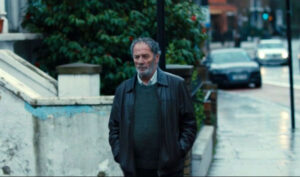
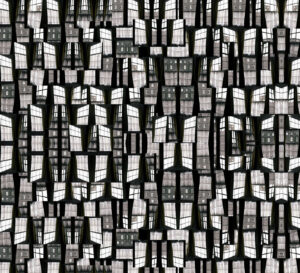
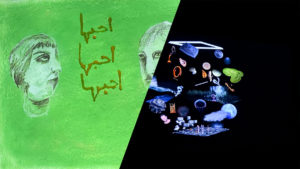

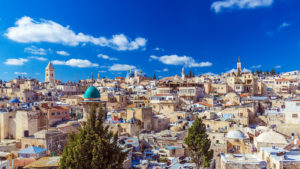




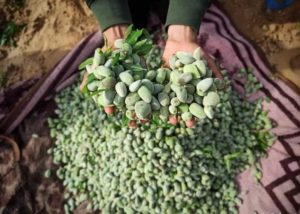

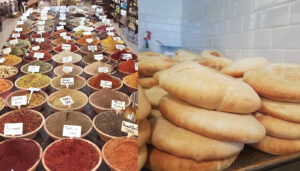

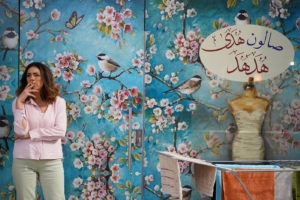



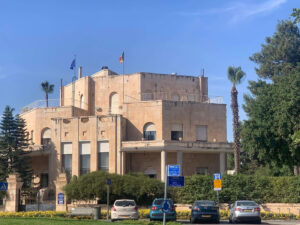
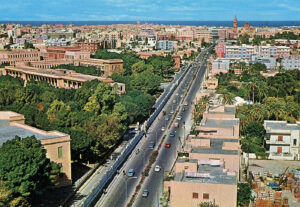


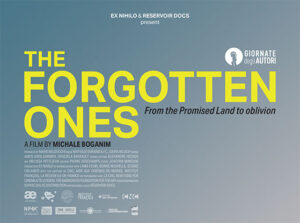

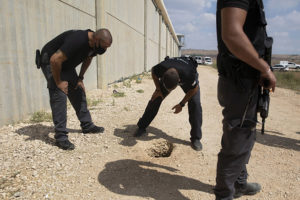


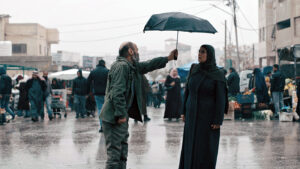
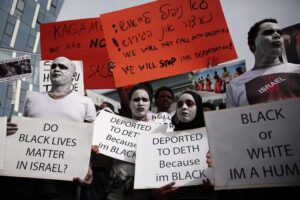
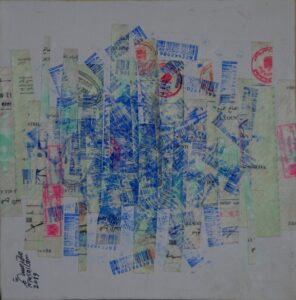
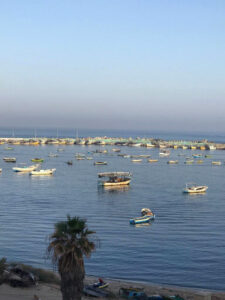

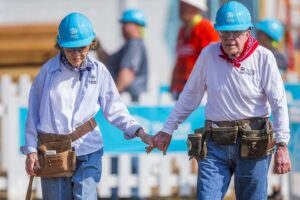
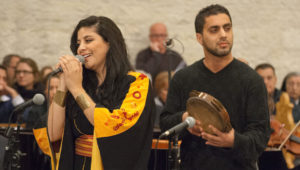

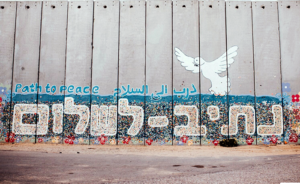

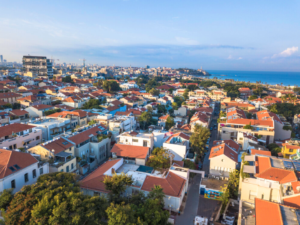

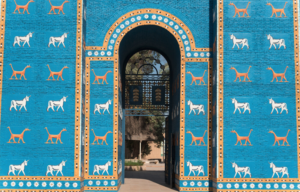
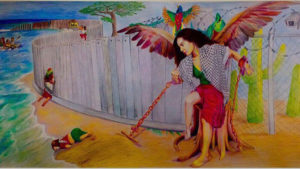
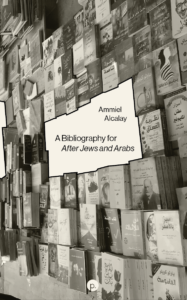

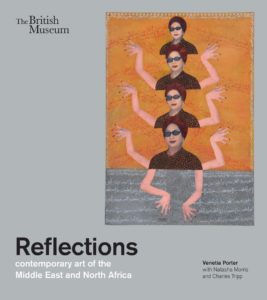
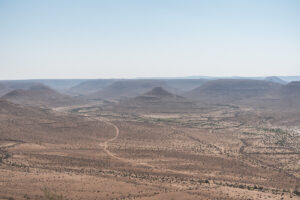


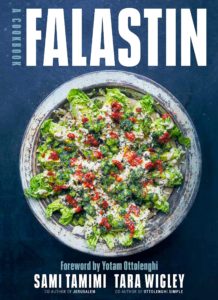

Excellent narration of a sad situation.